The AMD Radeon RX 5700 XT & RX 5700 Review: Navi Renews Competition in the Midrange Market
by Ryan Smith on July 7, 2019 12:00 PM ESTPower, Temperatures, & Noise
Last, but not least of course, is our look at power, temperatures, and noise levels. While a high performing card is good in its own right, an excellent card can deliver great performance while also keeping power consumption and the resulting noise levels in check.
| Radeon Video Card Voltages | |||||
| 5700 XT Max | 5700 Max | 5700 XT Idle | 5700 Idle | ||
| 1.2v | 1.025v | 0.725v | 0.775v | ||
Looking at boost voltages for AMD's new midrange 7nm cards, we don't have too many points of comparison right now. But still, with AMD's drivers reporting a maximum boost voltage of 1.2v for the 5700 XT, not even the incredibly juiced Polaris 30-based Radeon RX 590 took quite so much voltage. It may very well be that TSMC's high-performance 7nm process simply requires a lot of voltage here, but it may also be a sign that AMD is riding the voltage/frequency curve pretty hard to get those high clockspeeds.
By contrast, the 5700 (vanilla) is a much more mundane card. With its lower clockspeeds, the card never goes above 1.025v according to AMD's drivers. Which given the impact of voltage on power consumption, it's actually a bit surprising the spread is so large.
| Radeon Video Card Average Clockspeeds (Rounded to the Nearest 10MHz) |
|||
| Game | 5700 XT | 5700 | |
| Max Boost Clock | 2044MHz | 1750MHz | |
| Official Game Clock | 1755MHz | 1625MHz | |
| Tomb Raider | 1780MHz | 1680MHz | |
| F1 2019 | 1800MHz | 1650MHz | |
| Assassin's Creed | 1900MHz | 1700MHz | |
| Metro Exodus | 1780MHz | 1640MHz | |
| Strange Brigade | 1780MHz | 1660MHz | |
| Total War: TK | 1830MHz | 1690MHz | |
| The Division 2 | 1760MHz | 1630MHz | |
| Grand Theft Auto V | 1910MHz | 1690MHz | |
| Forza Horizon 4 | 1870MHz | 1700MHz | |
Meanwhile clockspeeds are also an interesting story. AMD said that they would no longer be holding back their chips' top boost clocks, and instead let the silicon lottery run its course, allowing the best chips to reach their highest clockspeeds. The end result is that our 5700 XT is allowed to clock up to 2044 MHz, 139MHz better than AMD's official Boost Clock metric guarantees. More to the point, this is a substaintial jump in frequency over both AMD's RX Vega and RX 500 series cards, which would top out around the mid-1500s.
That said, the 5700 XT doesn't have the TDP or thermal cap to susntain this; I couldn't actually hit 2044MHz even in LuxMark, which as a "light" compute workload tends to bring out the highest clockspeeds in processors. Instead, the best clockspeed I was able to hit was a bit lower, at 2008MHz. So while the silicon is willing, the physics of powering a Navi 10 at such high clockspeeds are another matter.
At any rate, even with TDP and cooling keeping the 5700 XT more down to earth, the card is still able to hit high clockspeeds. More than half of the games in our benchmark suite average clockspeeds of 1800MHz or better, and a few get to 1900MHz. Even The Division 2, which appears to be the single most punishing game in this year's suite in terms of clockspeeds, holds the line at 1760MHz, right above AMD's official game clock.
As for the 5700, with its more conservative TDP, clockspeed specifications, and likely some binning, the card doesn't reach quite as high. Its 1750MHz max boost clock is just 25MHz over AMD's guaranteed clock. Meanwhile its clockspeeds are overall a bit more densely packed than the 5700 XT's; all of our games see average clockspeeds between 1630MHz and 1700MHz.

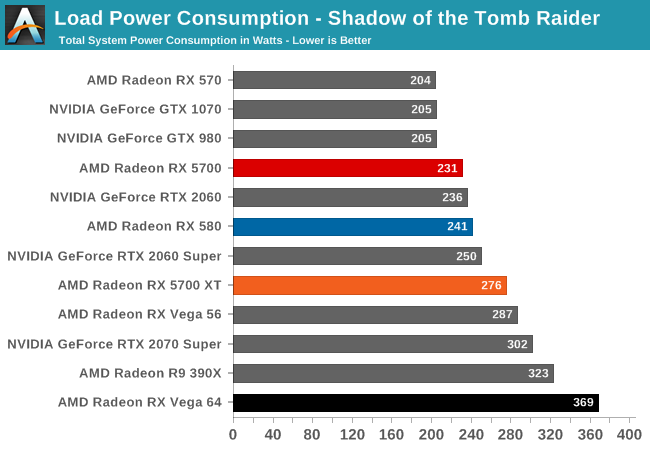
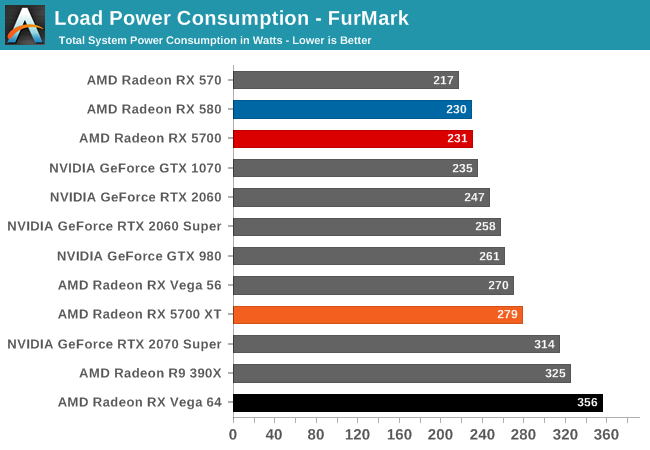
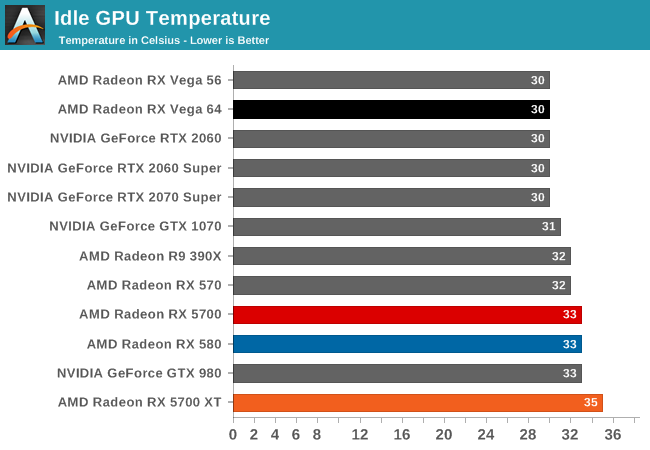

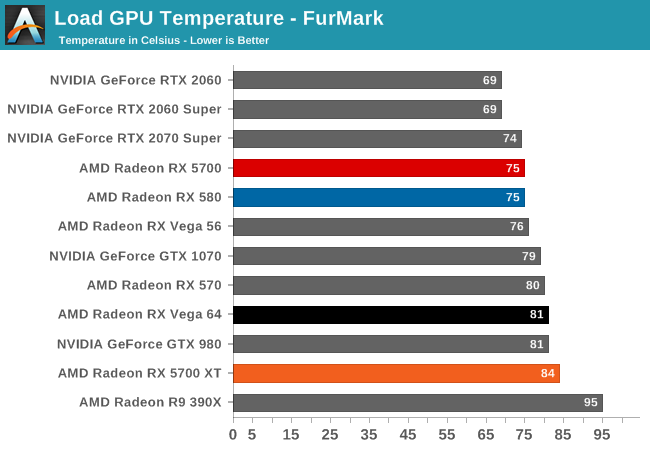
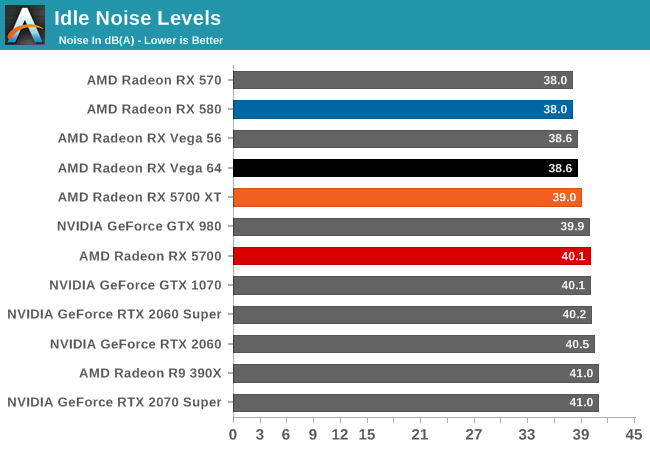
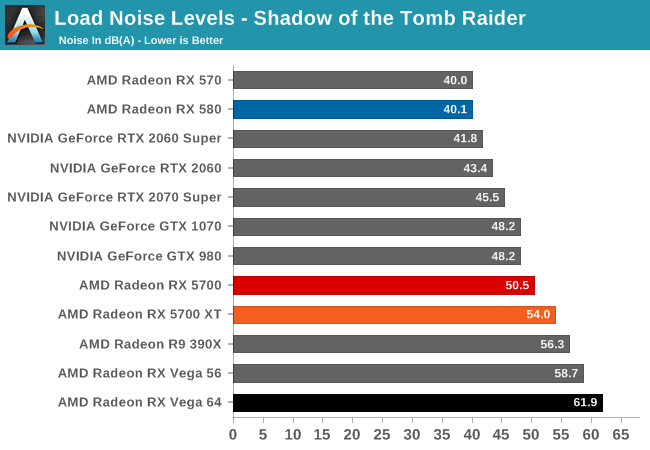
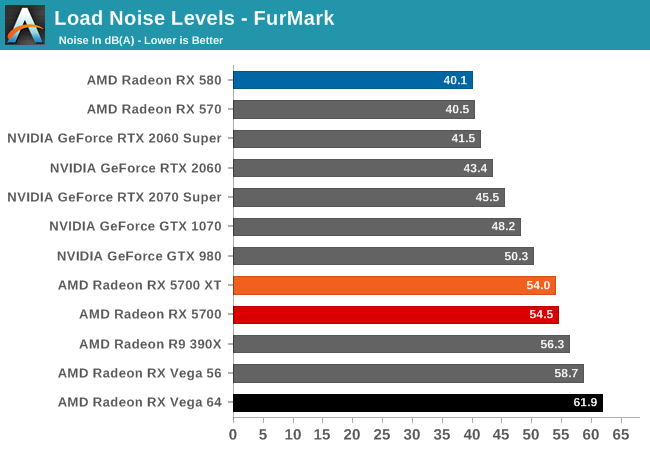










135 Comments
View All Comments
Ryan Smith - Sunday, July 7, 2019 - link
Hey all,As you've probably noticed, this review is a bit bare-bones on information outside of benchmarks. With 2 video card launches in the span of a week - not to mention AMD's very important CPU launch - I've been stretched a bit thin trying to get everything to fall into place.
So with the basics done and all of the benchmarks processed, I'm posting this now to let you all see how the RX 5700 series did on our testbench, and what my impressions are of the card. After getting some much-needed sleep, I'll be working on fleshing out the article some tonight, and then later in the week after I return from a further trip. I have 15 pages of notes on everything from threads to video decoding, and I want to get to it all.
Icehawk - Sunday, July 7, 2019 - link
I know there is Bench and only so much space but considering who the target market is (you even specify in the conclusion) it would have been nice to see a 970 and a 580 in graphs. I’m still thinking it’s wait another generation though as my 970 handles 1440p on most games and I want the full jump to 4k from my next card - especially if it’s going to run north of $350.0ldman79 - Sunday, July 7, 2019 - link
Agreed.I've got a 960M, a GTX 970 in one machine and 970 SLI in another.
I'm just now starting to look hard at the newer cards. Direct comparisons would be appreciated, however, direct comparisons are already found on the Bench.
Surfacround - Monday, July 15, 2019 - link
sorry, but dump the gtx970 SLI, and get a super2060, or a gtx1660ti... or an AMD card, nvidia needs to have a ZERO graphic cards sales period for a year, so they realize that they have it be in the GPU making business, not the sell-overpriced-GPU-business...nvidia needs to sell its rtx2070,2080 cars at half price... because the new consoles are going be as fast or faster than a gtx1660ti... (same speed as a 5700 my guess, or effectively that speed... for AMD it is moot, if you buy the new console in two years, or their graphics card... NVIDIA still loses.
Ryan Smith - Sunday, July 7, 2019 - link
Just so it's noted, a 580 is in the graphs (it's in blue). As for a 970, with half of AT's video cards on the other side of the country right now, I couldn't swing one. But I do have a 980 in there.just4U - Sunday, July 7, 2019 - link
I think I would have preferred to see the last generation king included (1080ti) but other than that there's some great reference points overall to compare to.yankeeDDL - Monday, July 8, 2019 - link
If I may: in general, it's great to see the new cards stacked against their direct competitors, however, for people looking to upgrade, it's almost always more interesting to be able to look back at 2, 3, even 4 generations.The benchmarks of the RX400 and RX300, with latest drivers and modern titles, don't exist, so it's difficult to compare them against the new breeds.
Obviously, everyone expects the new ones to be considerably faster, however, the question is "is it worth it"?
Example: I have a Ryzen 5 1600 and I wonder if I should upgrade to the 3600x. More cores, higher clock, same power: for sure it is faster, but does it really make a difference?
jabber - Monday, July 8, 2019 - link
They always forget to include the previous 2-3 generations which are in fact the cards 85% of us 'normal' folks looking for a midrange upgrade have. We only get to see how they compare with cards from 6 months previous.Just a note...some of us sweat our hardware for 2-4 years...cos we have to.
BikeDude - Monday, July 8, 2019 - link
"some of us sweat our hardware for 2-4 years...cos we have to."No, we are not cheap, but "environmentally conscious". ;)
jabber - Monday, July 8, 2019 - link
That and some of us just don't waste our lives running benchmarks all day."Mmmm man that $650 got me an extra 3FPS!"